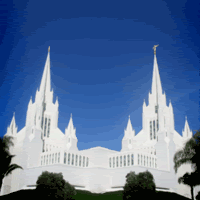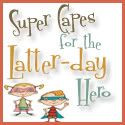Sunday, August 3, 2008
As most of you know Andrew is a train fanatics, so we went to the Roundhouse Festival in Wyoming. JR didn't come with us since he had a Madrigal Reunion that he wanted to go. We all had fun at the festival and we did some fun stuffs. We got to ride the turntable in the old roundhouse, rode the train, and watch all the train models and displays. Andrew & Jessica had fun with riding with the small train made of plastic barrels. I took a short video of them that you can watch below.
From the Roundtable Festival, we went to Bear River Greenway to catch cra fish. We caught quiet a lot of them. We used bacon as our bait and we did pretty good. One of the kids that has been hanging around the river, offered to help us and he was really good at it since he's been doing it for a while.
When Andrew got bored watching them catching craw fish I took him for a walk around the park and below are the few pictures we took of the Debbie Smith Bridge.








On our way home we took the auto tour (Mormon Trail/Pony Express) through the echo canyon. Echo Canyon was described in 1860 by Sir Richard Burton: "An American artist might extract from such scenery as Echo Canyon, a system of architecture as original and as national as Egypt ever borrowed from her sandstone ledges or the North of Europe from the depths of her fir forests."
The trail through Echo Canyon was one of the most important of westward expansion. Buffalo, native Americans, and explorers used this natural pathway between the lush grass of Wyoming and the salt deserts to the west. They were later followed by wagon trains, the Mormon pioneers in 1847, the Overland Stage, the Pony Express, gold prospectors and silver miners, the Union Pacific railroad, the first transcontinental telegraph line, the Lincoln Highway, and Interstate 80. Click here for more info.


We first stop at the Pony Express. The Pony Express was masterminded by a freight firm owner named William H. Russell. At the objection of his business partners of Russell, Majors and Waddell, Russell felt that mail service should continue on to the western United States from where the railroad tracks ended in the east. It was spring of 1860 and the onset of the Civil War was hindering the connections between the thousands of pioneers who were migrating westward and their counterparts in the east. The Pony Express would hire young riders and fast horses that could carry mail 1,860 miles in only ten days, less than half the time it took for a letter to reach California by stage Line.
The Pony, as it was called, started in St. Joseph, Missouri. The route traveled through the heartland, the rugged plains of Wyoming, down through Utah and on through Nevada to Sacramento, California. The business was successful for only 18 months however as the Transcontinental Telegraph was installed in 1861 making the Pony obsolete.
Picture of Pony Express Monument, dedicated 2001The Pony Express Trail entered Utah through what was called the ‘Head of Echo Canyon’ near Castle Rock, Wyoming. Riders would travel anywhere between ten to fifteen miles between stops with no rests. The second station was called Hanging Rock located halfway down Echo Canyon. From there riders went to the Weber Station, or Bromley’s Station in the town of Echo.
James Bromley is a prominent figure in the town of Echo in fact he owned most of it and eventually sold all his land to one of Brigham Young’s sons for a mere $400.
Bromley ran the Pony Express division from the Pacific Spring (east of Rock Springs, Wyoming) all the way into Salt Lake City.
For the first six months of operation, the route had to travel up three-mile Canyon and down Parley’s Summit, which at the time a toll was charged to use the newly cut road. When spring snows finally melted and stations could be installed along a faster route, the trail went through East Canyon, over Big Mountain, and down Emigration Canyon into the center of Salt Lake City.
One of the buildings at Bromley’s Station, built in 1853, had stone walls that were 26 inches thick, most likely to keep rampant thieves from the U.S. Mail. When the building was torn down in 1931 the demolition crew found a five dollar gold piece dated 1847, a pair of gold-rimmed glasses, a Pony Express Rider’s gun case and an old piece of parchment paper containing a love letter from a girl in the east to her sweetheart who was riding the Pony.



Underneath towering conglomerate cliffs is the Echo Church, built in 1876, with a belfry steeple, wooden entry, pine paneled interior, and brick walls. It was a public school from 1880 to 1913, and Mormon chapel for 50 years until 1963


Temple Camp and Suplication Hills.<>G>


The Devil's Post Office


The Witches Rocks

Henefer-Echo WIldlife Management Area

A pose with a Lama
Weber River Crossing. The first known overland travelers to cross the Weber River, at a point .4-mile directly in front of this marker, were the Harlan-Young, Lienhard, and Donner-Reed parties of 1846. It was at this crossing that Lansford Hastings left a note telling the Donner-Reed Party not to go through Weber Canyon. As a result of this note, the Donner-Reed Company blazed the trail from Henefer Valley to Salt Lake Valley, which the Mormons followed in 1847 and for the next 22 years.
The first known law enforcement officer to give his life in the line of duty was Sheriff Rodney Badger one of the original pioneers. He drowned in 1853 in the Weber River while assisting pioneers who were fording the river.




Weber Canyon Explorers Trail Monument. WEBER CANYON EXPLORERS' TRAIL Weber Canyon has always been the most important gateway into the valley of the Great Salt Lake. Through its portals passed many important persons of early Utah history, including John Weber, a trapper, who is supposed to have been killed by Indians in the winter of 1828-29, Etienne Provost, who in 1824 reported one of the first explorations of the river, and Osborne Russell who reported explorations in 1841. In 1846, California emigrants took the first wagons down the Canyon, encountering great hardship and suffering severe losses. They included the Hudspeth, Bryant-Russell, and Young and Harlan parties. In this vicinity, the Donner-Reed party of 1846, which later met a tragic fate on the east slope of the Sierras in California, turned southwest and blazed a trail through the mountains to the Salt Lake Valley. This trail was followed by the Mormon Pioneers (1847), the California "Gold Rush" Emigrants (1849-50), the Mormon Handcart Pioneers (1856), Overland Stage (1856), and the Pony Express (1860-61).


We cooked the cra fish right away once we got home and we ate them for our dinner. They're really yummy. They taste like lobster. Yes we got lot of them. One big plate we ate for dinner and I saved the other one for tomorrow.














